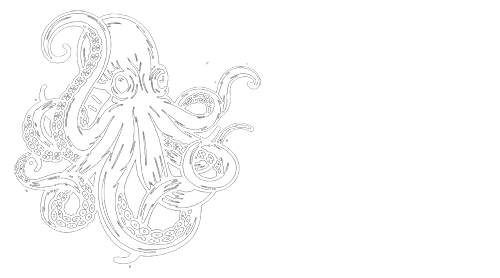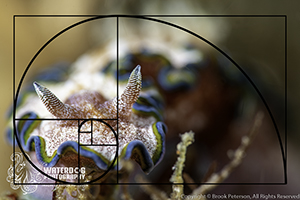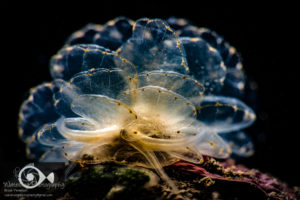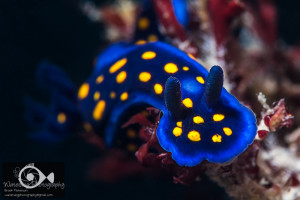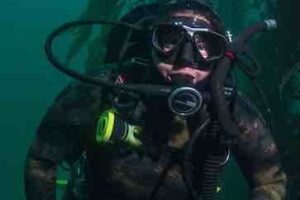One of the most powerful techniques a photographer can use to tell a story is composition. “A picture is worth a thousand words…” but only if it has something to say. Composition is one of the keys to story telling through imaging. The way you show the subject, secondary subject and environment gives the image the context in which to tell your story. Mastering some compositional concepts will improve your ability to make your picture worth a thousand words.

Often we think of composition as a set of rules. The rule of thirds, leading lines, and using space within the frame are all scientific aspects of making photographs. But there are many things to consider beyond those “rules” that make our photographs pieces of art. Aesthetic value is an important part of image making, and a blending of the scientific and aesthetic aspects of photography are what make our images great.
The positioning of your subject may be one of the most important elements of the composition. In a macro image, your main focus will usually be one subject. It can be more, but there should be only one “idea” that is being presented.

The idea or “story” in the image above is that this small goby is being attacked by a parasite. Consider the elements of composition that make this image work: There are leading lines on the diagonal, the subject is isolated by a black background, and the subject’s eye is on the intersection of the top and left third of the frame. Those are scientific elements. But the aesthetic elements are the bright orange color of the whip coral, and the parasite, itself, which is centered in the image. The goby’s large round eye may also convey a feeling of discomfort or fear. All these elements together are what make the composition work.
Close Focus Wide Angle images often have three elements of composition: something in the foreground, something in the middle distance, and something in the background.

In the image above, the fish (foreground) is the main subject, but it is actually the secondary subject, the nest, (middle distance) that is telling the story. This fish is guarding his nest of eggs. The background has the surface and sun and gives a sense of depth to the image. These aesthetics combine with the science; leading lines, rule of thirds, and diagonal composition to create a pleasing composition.
Wide Angle photography may present other challenges to composition. When shooting wide angle choose a subject that is large enough to stand out in your frame. Colorful reefs or reef fish can enhance the image, and a diver or sun in the background will give the image depth.

The composition of the image above has several aesthetic elements: The colorful reef in the foreground, the movement of the school of fish which stand out against the silhouette of the coral bommie. These elements draw the eye around the frame causing the viewer to look back and forth between the reef and the fish. The composition has the subject in the lower left third and secondary subject in the upper right third. The bommie and the surface of the water give the image depth.
Another compositional idea is that if you have a subject that is moving, it should have room to come “into” the frame. In other words, there should be space in front of the animal and room around it so that the viewer has a sense of the direction the animal is moving.

These dolphins are playing and splashing near the surface of the sea, there is room for them to swim “into” the frame, and the dolphins and sandy bottom in the background help to give the image depth. In addition, most of the dolphins are isolated from each other which enhances the composition.
It isn’t just one compositional element that makes up a great image, but a combination of several. It is important to think while you are shooting about what story you are trying to tell and how you are going to tell it. Will you use color and light or darkness? Will you isolate a single subject? Will you use generally accepted compositional rules? Will you break the rules in favor of your own senses? These are all things to consider when creating art. Remember, that any child can push the shutter on a camera, but an artist is thinking about all the things that combine to make a beautiful image. Take your time and consider the tools that you have at your disposal before you press the shutter. This is what will make your images stand out from the crowd.
Join me for a workshop! Travel to a great destination where you will have exclusive coaching on your underwater photography. Meet new people, network, try new techniques, and learn with the pros! Click on Travel and Workshops for more information.
Subscribe now!
As always, if you enjoy my images please visit my website, waterdogphotography.com, or give me a like on Facebook at Waterdog Photography Brook Peterson. Don’t forget to follow me here at waterdogphotographyblog and please feel free to share on Facebook or other social media.
My photographs are taken with a Nikon D850 in Sea and Sea Housing using two YS-D2J Strobes.
All images and content are copyright protected by Brook Peterson and may only be used with written permission. Please do not copy or print them. To discuss terms for using these images, please contact me.
© Brook Peterson 2020

